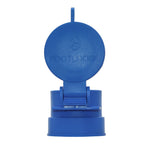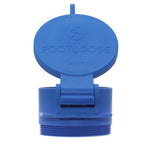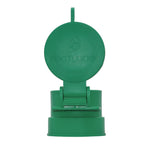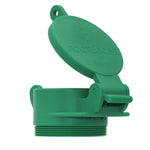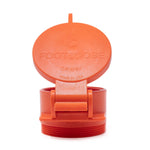You have no items in your shopping cart.
In a booming metropolis like New York, it’s easy to misinterpret a city’s full architectural picture. In fact, bustling streets and towering buildings make up only half of the entire story. Underneath it all is a vastly concealed world of steel and concrete, home to intricate utility systems keeping the ebb and flow of the city alive.
Connecting the two worlds are portals, otherwise known as “manholes,” that provide convenient access for maintenance workers. In this short passageway, you’ll find a hidden apparatus of tunnels and pipes stretching out for miles. These underground chambers hold a city’s sewer and drainage system—a brilliant invention that, since implemented, has allowed cities to safely manage waste and excess water.
Sewer systems have been around since nearly the dawn of civilization and can be deemed one of humankind’s most magnificent achievements. To provide a proper insight into the happenings beneath the streets you wander, let’s delve into the complex history of manhole covers and how they came to be such an integral, although unspoken, part of our lives.
What Are Manhole Covers?
The basic purpose of manhole covers has always remained the same: to seal an accessway to underground utility systems. As technology and civilization have grown, manhole covers started getting placed not only above sewers but above gas, electric, water, and telephone lines.
Initially, the word “manhole” was not used to describe sewers at all. Rather, it referred to the access holes between decks on all-male sailing ships. These days, depending on who you ask, manholes and their covers can symbolize a variety of things, making their significance unique to the municipality they are placed in. However, all manhole covers share one aspect: despite their mundane appearance, they are rich in history and opportunities for cultural and creative expression.
A Means of Cultural Appreciation
Manhole covers are utilized in cities all over the world. But in Japan, officials have found ways to turn a rather prosaic necessity into a sort of mini cultural landmark. Embellished with logos, bright colors, and interesting motifs, municipalities compete with one another by installing manhole covers with designs distinct to the town they reside in.
For years, Tokyo street caps have been revered as a means of appreciation for the elements of Japanese culture, allowing tourists and locals alike to be intrigued by the artistic prowess at their feet. The portrayal of samurai, local festivals, and manga characters contribute to the fact that Japan’s beautiful and authentic culture can be found everywhere: up high, in front, and even down below.
An Outlet for Creative Expression
Often described as “street jewelry,” manhole covers are seen all over the world in various shapes, sizes, and designs. You’ll hardly ever find any manhole cover without some kind of embellishment in terms of words or patterns, and despite their appeal to artists and creative folk, there is a more practical reason for this.
In the 19th century, early manhole covers were created as smooth iron plates. Not long after these covers were installed, city officials soon realized that without some kind of traction, it was easy for horses and passersby to slip and fall on them. Engraving manhole covers soon became common practice and not only helped keep citizens from falling but also adorned city streets with tiny ornaments of beauty.
A Fascinating Glimpse into History
At first glance, a manhole cover may not seem like it would provide you with much information. But if you look closer, the engravings might clue you into a city’s long-forgotten past. Many manhole covers in European cities take on a more literal than creative sense, revealing the names of manufacturers and famous engineers of manhole history.
Manhole covers are the reflection of the society around them; a testament to the fact that the streets today were crafted by great people who once roamed them centuries ago. For one, catching a glance at a London street may divulge the name of George Jennings, the inventor of the first flushing toilet. Another manhole cover might hint at infrastructures of the past in the form of old telegraph and electrical company titles and logos, making up important reminders of a city’s advancements.

The Early Days of Manhole Covers
In the preliminary stages of civilization, hygiene (or lack thereof) was a prominent issue. Constructed along great rivers that served as open sewers, cities from before the common era to the late 19th century were often subject to bacterial illnesses like plagues that would arise from contact with human waste.
As the need for cleaner cities arose, it was the Romans that finally decided to seek a more advanced solution that did not risk the health of its citizens. Around 3500 BCE, the ancient Romans birthed the first underground sewer system, made up of complex aqueducts that would drain local marshes and transport waste away from the city.
Dug by hand and lined with brick, the Roman sewers had accessways that allowed civil engineers to enter the system and maintain it as needed. On top of these accessways would lie a heavy stone slab that sealed the sewer system, which can be described by the familiar term we use today—a manhole cover.
These Roman architectural feats later became the framework of the present-day manhole cover. After the revolutionary empire fell into disrepair in the Middle Ages, it was only during the 19th century that the modern manhole and manhole cover were developed with more advanced materials and installation techniques but still using the foundation of Roman structure and design. By 1878, major cities like Paris had sewer systems spanning hundreds of miles.
How Are Manhole Covers Used Today?
Today, sewer and utility systems are not so different from the first of their kind. Manhole covers, on the other hand, have experienced several advancements, transforming from simple slabs of stone or wood to more stable caps made of steel or iron. Using wisdom from the past, these covers are now used to conceal all kinds of public utilities and optimized to protect the safety of citizens and workers.
Modern sewer systems mark the height of engineering and humanity’s desire to advance, and their accompanying manhole covers can be defined as small monuments of history and society—an interesting feature to traipse over on your morning walk.
If you’re looking to learn more about how manhole covers are faring in modern times, read our blog post on why the word “manhole” may be switching to the gender-neutral term “maintenance hole.”



